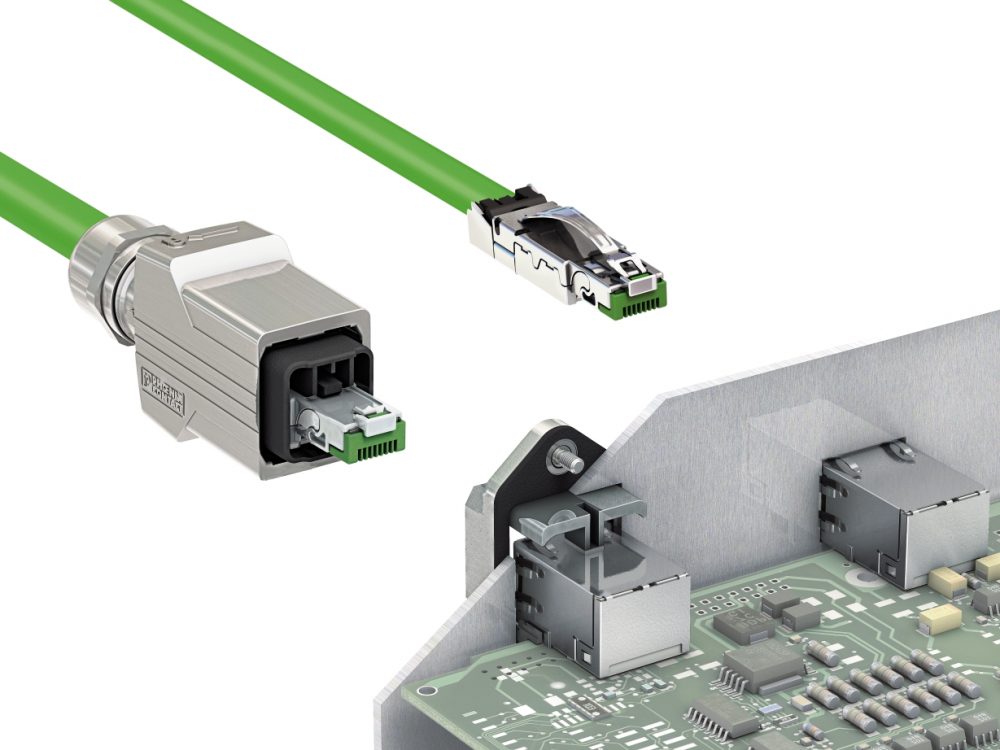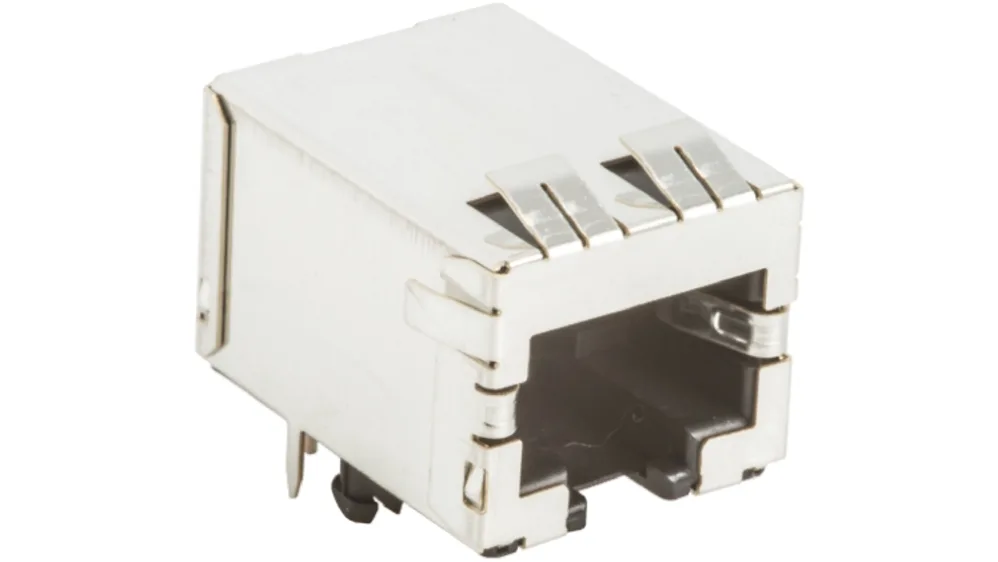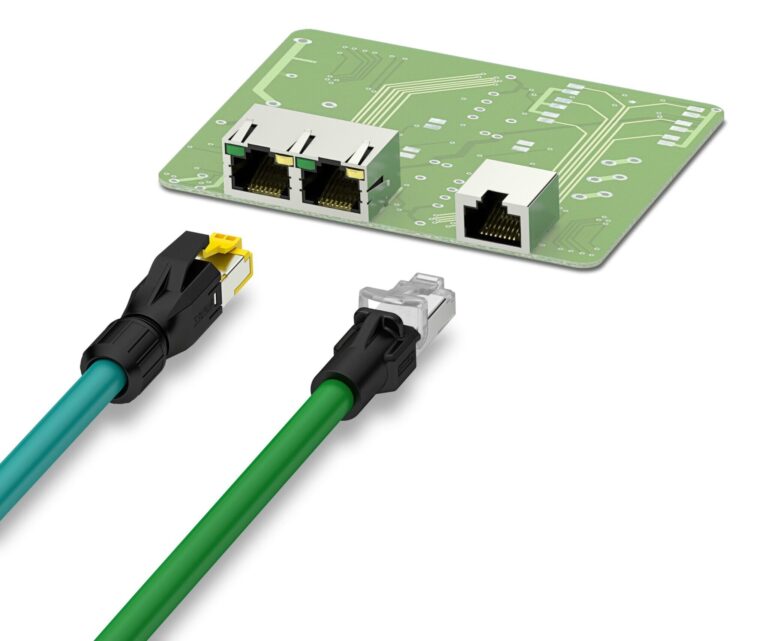The width of a standard RJ45 connector is typically around 11.68 millimeters (0.461 inches). This measurement is taken across the widest point of the connector, encompassing the outer dimensions of the plastic housing. The standardized size ensures compatibility and allows RJ45 connectors to be widely used in various networking devices and equipment.
Let’s dive into the nitty-gritty of this dimension, exploring how it shapes the way we stay connected in our increasingly digital world.
Overall Dimensions
The size of an RJ45 connector is really important for it to work well in computer networks. It’s about 11.68 mm wide, measured from its widest part. This size is like a standard so that it can fit with different networking equipment like routers and switches.
Moreover, the connector is made with a plastic cover that keeps everything in place. Inside, there are eight metal pins that send data, and they are set up in a specific way. The plastic cover also has a clip that helps keep the connector in the right place when you plug it into a socket, so it doesn’t accidentally come loose.
Lastly, these sizes are decided by groups like the Telecommunications Industry Association and the Electronics Industries Alliance, making sure everything works well together. This way, RJ45 connectors can be used in buildings and homes for internet connections without any problems.
Exploring Essential Elements of RJ45 Connectors

- Plastic Housing:
- The outer shell of the RJ45 connector is typically made of durable plastic.
- It provides physical protection for the internal components and helps maintain the structural integrity of the connector.
- The housing also aids in proper alignment during the connection process.
- Metal Contacts/Pins:
- Inside the plastic housing, there are eight metal contacts, also referred to as pins.
- These metal pins correspond to the eight wires in the twisted pair cables.
- The pins establish electrical connections with their counterparts in the socket, facilitating the transfer of data signals.
- Wiring Configuration:
- The RJ45 connector accommodates four pairs of twisted copper wires.
- Each wire is terminated on one of the eight pins according to a standardized wiring scheme.
- The wiring configuration follows a specific color-coding pattern, ensuring consistency and compatibility with other network components.
- Twisted Pair Wires:
- Also, it is designed to work with twisted pair cables, where each pair of wires is twisted around each other.
- Twisted pair wiring helps minimize electromagnetic interference, improving the overall signal quality and reliability of the connection.
Clip or Latch:
- The connector features a clip or latch mechanism typically located on the top side.
- This clip ensures a secure and stable connection by latching onto the corresponding features in the socket.
- It helps prevent accidental disconnection and provides tactile feedback during the insertion and removal of the connector.
Wiring Configuration: A Simple Guide to RJ45 Connector Setup
Here is an overview of the wiring configuration for an RJ45 connector:
- Color Coding:
- The wiring follows a standardized color-coding scheme to maintain consistency and facilitate correct connections.
- The eight wires are often grouped into four pairs, each with a distinct color: white with a colored stripe and a solid color.
- Pair Configuration:
- The four pairs of wires are typically labeled as Pair 1 (Blue), Pair 2 (Orange), Pair 3 (Green), and Pair 4 (Brown).
- Within each pair, one wire has a solid color, and the other has a white color with a stripe of the corresponding solid color.
- Pin Assignments:
- The eight pins of the RJ45 connector are numbered 1 through 8.
- Each pin corresponds to a specific wire in the twisted pair cable, following a defined sequence.
- TIA/EIA-568 Wiring Standards:
- Cross-Over Cables:
- In some cases, cross-over cables are used to directly connect similar devices (e.g., two computers without a switch).
- In a cross-over cable, one end follows the TIA/EIA-568A standard, and the other end follows TIA/EIA-568B.
- The most commonly used wiring standards for RJ45 connectors are TIA/EIA-568A and TIA/EIA-568B.
- TIA/EIA-568A:
- Pair 1: White-Blue, Blue
- Pair 2: White-Orange, Orange
- Pair 3: White-Green, Green
- Pair 4: White-Brown, Brown
- TIA/EIA-568B:
- Pair 1: White-Orange, Orange
- Pair 2: White-Green, Green
- Pair 3: White-Blue, Blue
- Pair 4: White-Brown, Brown
Compatibility Explained: A Guide to Seamless Connections with RJ45 Connectors
Here’s an overview of compatibility considerations related to RJ45 connectors:
- Standardization:
- The RJ45 connector follows industry standards set by organizations such as the Telecommunications Industry Association (TIA) and the Electronics Industries Alliance (EIA).
- Standardization ensures that different manufacturers adhere to the same specifications, promoting compatibility.
- Wiring Standards:
- The wiring configuration of them follows specific standards, such as TIA/EIA-568A and TIA/EIA-568B.
- Devices connected using the same wiring standard can communicate effectively, while cross-over cables accommodate direct connections between similar devices.
- Ethernet Standards:
- Moreover, they are widely used in Ethernet networks, and compatibility is maintained through adherence to Ethernet standards such as 10BASE-T, 100BASE-TX, and 1000BASE-T.
- Devices designed to work within the same Ethernet standard can communicate with each other seamlessly.
- Category Compatibility:
- RJ45 connectors are associated with different categories of twisted pair cables, such as Cat5e, Cat6, and Cat6a.
- Devices and connectors designed for a specific category are compatible with cables of the same or lower categories, ensuring backward compatibility.
- Modular Jack Compatibility:
- Further, they are often used in conjunction with modular jacks in wall outlets, patch panels, and networking equipment.
- The compatibility between the connector and the modular jack ensures a secure and reliable physical connection.
- Cross-Compatibility:
- Also, they are designed for universal compatibility, allowing devices from different manufacturers to connect seamlessly in a standardized network environment.
- This cross-compatibility is crucial for the diverse range of networking equipment used in homes, offices, data centers, and other settings.
- International Standards:
- The international acceptance of RJ45 connectors in Ethernet standards ensures compatibility across various regions and countries, promoting global interoperability.
Limitations of RJ45 Connectors: What You Need to Know for Better Networking

Here are some common limitations associated with RJ45 connectors:
- Limited Data Transfer Speeds:
- The data transfer speeds supported by standard RJ45 connectors are suitable for many applications, but they may become a limiting factor in high-performance environments. In such cases, alternative connectors or fiber optic solutions may be preferred.
- Distance Limitations:
- The maximum effective distance for reliable data transmission over twisted pair cables with them are influenced by factors like cable category and signal interference. In applications requiring longer distances, signal repeaters or fiber optic solutions may be necessary.
- Susceptibility to Interference:
- Twisted pair cables used with RJ45 connectors are susceptible to electromagnetic interference (EMI) and radio frequency interference (RFI). In environments with high levels of interference, shielded cables or fiber optic solutions may be more suitable.
- Bulkiness and Size:
- Moreover, they can be relatively large and bulky, making them less suitable for applications where space is a critical factor. Miniaturized connectors may be preferred in compact devices or scenarios where space optimization is essential.
- Physical Durability:
- The plastic housing of them may not be as robust as metal connectors, making them susceptible to physical damage in harsh environments. In industrial settings or outdoor installations, ruggedized connectors may be preferred.
- Manual Termination Challenges:
- Terminating them onto twisted pair cables requires precision and skill. Improper termination can lead to performance issues, signal degradation, or connectivity problems. Users without proper training may find termination challenging.
- Not Ideal for Power Transmission:
- In addition, they are primarily designed for data transmission and are not well-suited for power transmission. PoE (Power over Ethernet) solutions do exist, but they have limitations in terms of power delivery compared to other dedicated power connectors.
- Limited to Copper-Based Networks:
- Besides, they are traditionally associated with copper-based networks. While this is suitable for many applications, fiber optic connectors may be more appropriate for scenarios requiring higher bandwidth or immunity to electromagnetic interference.
- Environmental Sensitivity:
- RJ45 connectors and the associated cables are sensitive to environmental conditions such as moisture and extreme temperatures. In outdoor or challenging environments, weatherproofing measures may be necessary.
FAQ’s
What is standard RJ45 size?
The standard size for RJ45 connectors is around 5.8 mm in outer diameter. These connectors are designed to reduce cable routing space and are available with 4-pair AWG27 (LSZH) or AWG26 (PUR) cables in various lengths and colors.
What size hole for RJ45?
A drill bit with a diameter of 14.5mm or more is sufficient for creating a hole for an RJ45 connector. Alternatively, a 5/8 inch (16 mm) drill bit can be used, and the hole can be widened to approximately 12mm*8.5mm square for a better fit.
Are all RJ45 the same size?
No, not all RJ45 connectors are the same size. They vary based on the category of cables they are designed for, and they are not a one-size-fits-all solution for different CAT cable types.
How wide is Ethernet cable?
Cat 5 Ethernet cables have a diameter of 0.204 inches, while Cat 6 Ethernet cables are slightly larger with diameters of 0.250 inches. The maximum cable length for the 10BASE-T application with Cat 5 is 100 meters.
Are RJ11 and RJ45 the same size?
No, RJ11 and RJ45 connectors are not the same size. RJ45 is bigger in size than RJ11. RJ45 has 8 wires inside, while RJ11 has 4 wires. They are not interchangeable.
What size is Cat6 RJ45?
The dimensions for a Cat6 RJ45 module (Euromod size) are approximate: Width – 25mm, Depth – 21mm, Height – 50mm, with a back-box depth recommended at a minimum of 15mm.
What is the size of the RJ45 wall plate?
The dimensions of a 2-Port Cat6 10G Shielded RJ45 Wall Plate are 80 x 80 x 31 mm (3.15 x 3.15 x 1.22 in.).
How many mm is Cat6 cable?
The wire diameter of a slim Cat6 network cable is about 4mm, whereas the wire diameter of a regular Cat6 cable is about 6.5mm.
What is the correct RJ45?
The correct RJ45 connector depends on factors such as the conductor insulation diameter range it can accept, whether it is a 2-prong or 3-prong plug, and whether it works with stranded or solid copper conductors.
Final Words
The standard width of an RJ45 connector, measuring approximately 11.68 millimeters (0.461 inches) across its widest point, underscores its consistent and interoperable design. This standardized dimension is pivotal in facilitating compatibility across a myriad of networking devices and equipment, making RJ45 connectors a ubiquitous choice for Ethernet connections.
Furthermore, the uniformity in size not only simplifies installation processes but also ensures the seamless integration of RJ45 connectors into structured cabling systems. As a fundamental component in networking, the width plays a crucial role in fostering reliability and ease of use in various applications, from homes and offices to data centers and industrial settings.

